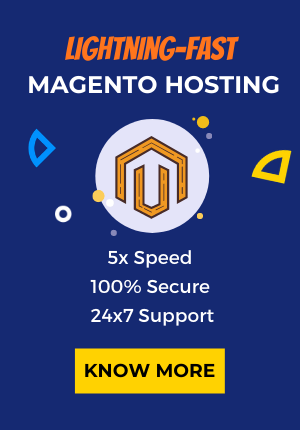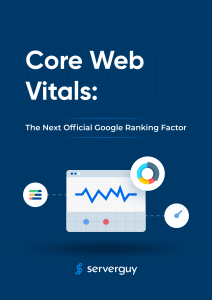Are you looking for an open-source Java EE application server?
There are some great options to choose from. Each of them provides some intriguing features, making it a seamless job to run all sorts of applications.
Let’s figure out which of them are the best open-source options that offer a seamless development experience. We shall also talk about their advantages and how they can help you design all types of flawless applications.
You can learn Java on CodeGym via practical tasks that help develop an understanding of the core concepts and work your way to learning about application servers and web development.
- What Is a Java EE Application Server?
- What Are Containers?
- Four Basic Types of Containers
- Best Java EE Application Servers
What is a Java EE Application Server?
Java EE Application servers assist you and back you up with Java EE platform APIS implementation. Apart from the standard services, they also assist you with application data and serve them to the clients. This is just like one that serves web pages to the browsers.
How do they help you with multi-tiered applications? They do so by hosting multiple application components and providing services in containers.
This brings us to another important aspect – the Containers. So, before we jump to the best options available, here is a quick look at it.
What are Containers?
Containers store Java class instances. For instance, a container can store all of it in one place, whether it’s a string, an integer, or a name.
So, once you want to retrieve a specific object, you need to revert the object according to the required type, especially when applying a type-specific method to the object.
Containers act as an interface that helps a component to interact with a low-level and platform-specific functionality.
So, a client component must be converted and assembled for Java EE platforms before deploying into a container.
Four Basic Types of Containers
When working with Java EE platforms, you will encounter four basic types of containers. Each of them has a different role and deployment. Here is a quick look:
#1 Java EE Containers
This type works as an interface between lower-level functionality available at the platform and the component. The platform essentially defines the container functionality, which can vary according to the component type.
However, with Java EE containers, the servers provide flexibility for different types of components to work together to ensure functionality in enterprise applications.
#2 Web Containers
With their help, web servers can interact with the web components. So, as an interface between the two, a web container manages to dispatch requests for application components, component lifecycle and acts as an interface for data context. For instance, it can provide current request information.
Web components are usually JSP pages, JavaServer Faces Facelets pages, or servlets.
#3 EJB Containers
These are the interface between enterprise beans and the Java EE server. These containers are used for the execution of enterprise bean applications that run on Java EE servers. The enterprise beans provide business logic in Java EE applications.
#4 Application Client Containers
These act as an interface between the Java EE Server and Java EE application clients. Generally, the application clients are Java SE applications that work with the Java EE server components.
Application containers use client machines and function as a gateway for the clients using the Java EE server components.
Best Java EE Application Servers
Now that we know the basics of Java EE application servers and containers let’s find out all about the best Java EE Application servers
#1 Apache Tomcat
First up, we have Apache Tomcat, which is perhaps the most popular Java EE application server going around right now. It’s an open-source implementation of JavaServer Pages and Java Servlets.
Interestingly, it was released under the Apache license V2 after being developed by the Apache Software Foundation in a participatory environment. It implements Java EE specifications, such as WebSocket, providing an HTTP server environment to run the Java code for the web.
Tomcat has a market share of more than 60% of all server deployments for Java applications, which speaks volumes about its popularity and acceptance.
Benefits of Apache Tomcat
- Provides a flexible environment with built-in customization tools
- Uses lightweight code allowing faster deployment and loading of applications
- It’s a comparatively more stable platform than other Java EE application servers.
#2 Jetty
Jetty is an HTTP web server and a Java Servlet container. It goes by the Eclipse and Apache foundation licenses. Interestingly, the first version of Jetty came up as an independent open source project, which is one of the reasons why it’s a free platform for Java developers.
When you learn Java, you will mainly work with different platforms like Jetty to understand how to use it with different Apache and Eclipse products like Spark, Maven, Google App Engine, and Geronimo.
With support features for the latest Java Servlet APIs, including JMX, JNDI, SPDY, WebSocket, JASPI, and AJP.
Benefits of Jetty
- Provides flexibility because you can use it as a web tier for full and partial Java application server stacks.
- Handles up to 10,000 requests, so it’s extremely fast and flexible.
- Small servlet memory design means that it’s highly scalable.
#3 Glassfish
Glassfish provides an open-source platform. It was originated by Sun Microsystems, mainly for the Java EE platforms.
Developers think of Glassfish as a reference to implement Java EE, which means it supports Enterprise JavaBeans, JPA, RMI, JavaServer, servlets, JavaServer Pages, and much more.
Glassfish allows you to develop various portable enterprise software, scale and integrate it further with newer tech. It also features optional components for additional services.
Benefits of Glassfish
- Provides optimum support for Enterprise JavaBeans, Java Server Faces, JMS, JPA, and many others.
- Easy to deploy Java codes because of its lightweight design
- You can create portable and scalable enterprise software, and integrate it with legacy systems.
#4 Apache Geronimo
Apache Geronimo comes from Apache Software Foundation, and you can run this Java EE server under the Apache license. Therefore, it’s an open-source project allowing you to contribute to it.
So, it presents a great opportunity to those who are learning Java to avail the latest releases and become a part of the open-source project by contributing to it.
Benefits of Geronimo
- It’s fully certified for a Java JEE 5 application server.
- Uses the best open source components.
- Provides support to Apache Derby DB and LDAP through built-in integrations.
#5 JBoss Enterprise Application Platform
Developed by Red Hat, JBoss EAP is a Java EE 7 container. It comes from the JBoss Middleware products from Red Hat, featuring the essential tools to manage Java services.
You can register to the developer program from Red Hat to access JBoss EAP and develop Java-based software. Furthermore, if you’re learning Java, it becomes even easier to access these tools and access forums, reference material, and knowledge base for JBoss EAP.
Benefits of JBoss Enterprise
- Easier to access open-source tools thanks to the support from Red Hat.
- Complies with Java EE 7 specifications.
- There are web services, stacks, and cloud architectures.
- Automation features make it easy to manage.
Conclusion
Java EE servers implement the Java platform and APIs, providing all the standard services. They have different benefits, depending on the platform you choose to work with.
Generally, it depends on what suits your needs, so you can choose the one that you are most comfortable with.
If there are any doubt and question, please leave them in the comment section.





